Experiencing a warm fridge and cold freezer is a household headache. Blocked air vents and dirty condenser coils could be the culprits. In this guide, we’ll tackle these issues head-on to restore your refrigerator’s optimal performance. Let’s troubleshoot and bring back the perfect balance.
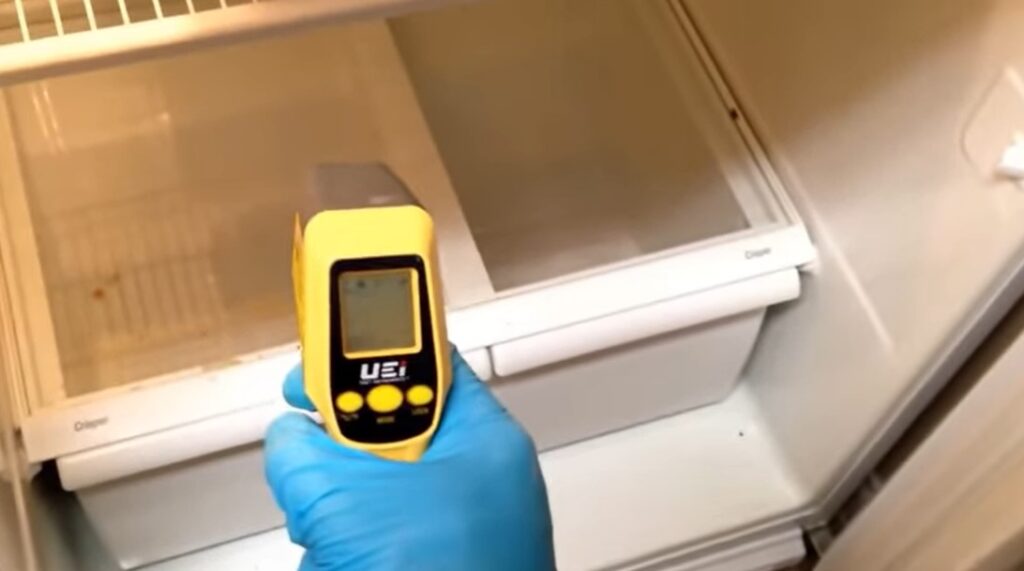
Why The Fridge Is Not Cold But The Freezer Is?
A fridge that isn’t cold but has a functioning freezer is a common problem, and there can be several reasons behind it. Here are some potential causes:
Airflow issues:
- Blocked vents: Check for any blocked vents inside the fridge or freezer, especially around the evaporator coils on the back wall. These vents allow cold air to circulate throughout the fridge, so any blockage can prevent proper cooling.
- Overstuffed fridge: A fridge that’s packed too tightly can restrict airflow, preventing cold air from reaching all areas. Try rearranging your food to allow better air circulation.
Defrost problems:
- Defrost cycle malfunction: Modern refrigerators have automatic defrost cycles, and a malfunction in this system can cause ice buildup on the evaporator coils, hindering their ability to cool the fridge.
- Clogged defrost drain: If the defrost drain becomes clogged with ice or debris, it can prevent melted ice from draining properly, leading to ice buildup and reduced cooling.
Component malfunctions:
- Faulty evaporator fan: The evaporator fan circulates cold air inside the fridge, and if it’s malfunctioning, it can’t effectively cool the compartment.
- Defective thermistor: The thermistor is a sensor that monitors the fridge temperature and tells the control board how much cooling is needed. If it’s faulty, the fridge might not receive the correct cooling instructions.
- Damaged damper control: The damper control regulates the flow of cold air from the freezer to the fridge. If it’s broken, the fridge might not receive enough cold air.
Other factors:
- Dirty condenser coils: Condenser coils on the back or bottom of the fridge dissipate heat. If they’re dusty or dirty, they can’t effectively remove heat, leading to reduced cooling.
- Door seal problems: Worn-out or damaged door seals can allow cold air to leak out, making it difficult for the fridge to maintain its temperature.
- Incorrect thermostat setting: Double-check the thermostat setting and ensure it’s set to the desired temperature.
What Are The Symptoms Of A Warm Fridge And Cold Freezer?
If you encounter a warm fridge and a cold freezer, it’s essential to know the usual signs. Identifying the problem can save you from the expenses of a complete refrigerator replacement.
Below are some of the common symptoms of a warm fridge and cold freezer:
- The fridge is warm to the touch, but the freezer is cold to the touch.
- The food in the fridge is spoiling faster than usual, but the freezer still freezes items.
- You hear loud and unusual noises coming from the refrigerator, such as clicking or buzzing.
- You notice ice buildup around the freezer walls and door.
- The temperature reading on the fridge is higher than usual, while the freezer registers a standard reading of 0°f.
How Do You Troubleshoot A Warm Fridge And Cold Freezer?
If you’ve encountered a warm fridge and a cold freezer, don’t panic. You can troubleshoot the problem and potentially avoid costly repairs. Here’s what you need to do:
Checking The Thermostat
- Start by verifying that the thermostat is set to the correct temperature. It should be between 37-40°f for the fridge and 0-5°f for the freezer.
- Adjust the thermostat if necessary and wait for 24 hours to see if it resolves the issue.
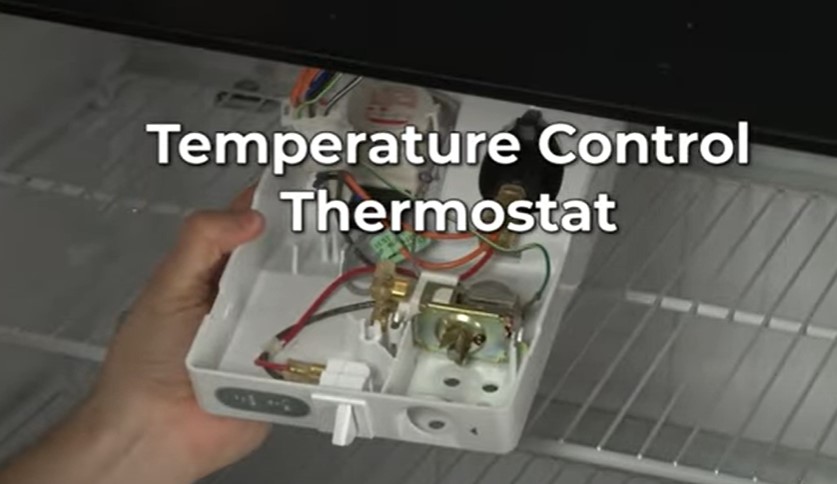
Inspecting The Condenser Coils
- Dirty condenser coils can cause poor cooling, resulting in a warm fridge and a cold freezer.
- Locate the condenser coils, usually found at the back or bottom of the fridge, and inspect them for dirt and debris.
- Clean the coils with a condenser coil brush or vacuum cleaner to improve cooling and prevent future issues.
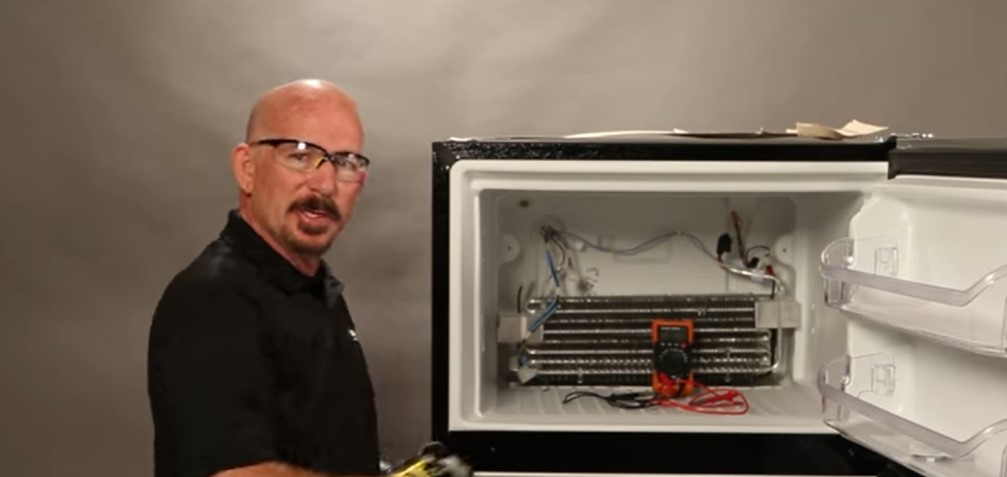
Examining The Evaporator Fan
- The evaporator fan circulates cool air from the freezer to the fridge. If it’s not working correctly, the fridge won’t cool properly.
- Open the freezer and listen for the sound of the evaporator fan. If it’s not running, it may need replacing.
- Unplug the fridge and remove any debris that may be blocking the fan to ensure it runs smoothly.
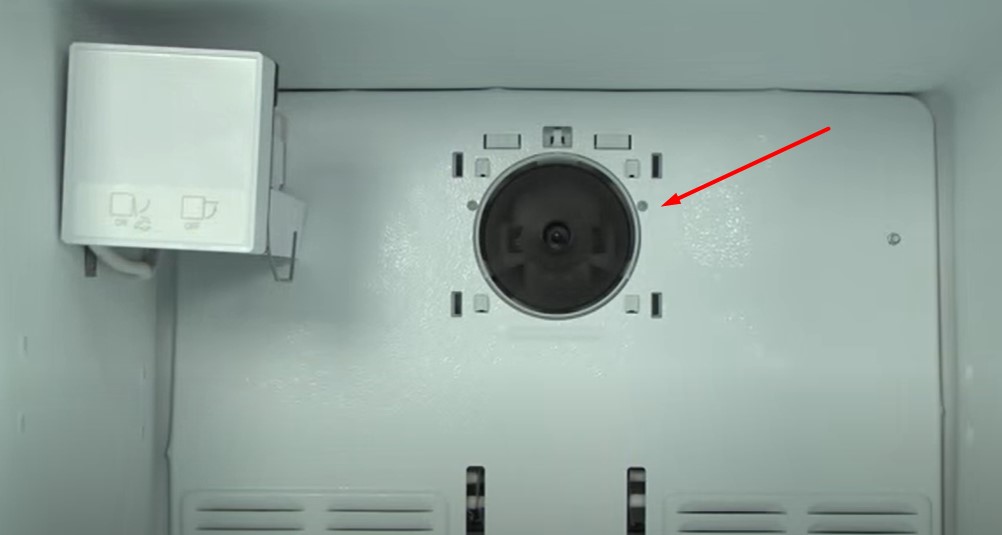
Verifying The Door Seal
- A faulty door seal can cause warm air to enter the fridge, leading to cooling issues.
- Check the door seal for any cracks or damage and replace it if necessary.
- Verify that the door is closing properly and not obstructed by any items.

By following these troubleshooting steps, you can fix a warm fridge and a cold freezer without needing a costly repair. Remember to wait for 24 hours after adjusting the thermostat before checking if the issue is resolved.
How Do You Fix A Warm Fridge And Cold Freezer?
Dealing with a warm fridge and a frozen freezer can be frustrating. Fortunately, there are several simple ways to fix the issue.
Here are the top solutions for fixing the problem:
Adjusting The Thermostat
Adjusting the thermostat may be the first solution to try. Here’s how to do it:
- Locate the thermostat. It is usually found in the fridge’s interior, often on the back wall or near the top of the compartment.
- Make sure the thermostat is set to the correct temperature. Most fridges should be set between 37 and 40 degrees Fahrenheit (3 to 4 degrees Celsius), while freezers should be kept at 0 degrees Fahrenheit (-18 degrees Celsius).
- Adjust the thermostat accordingly.
Vacuuming The Condenser Coils
If the condenser coils are dirty, they can cause the fridge to overheat, resulting in a warm environment. Follow these steps to clean the condenser coils:
- Locate the condenser coils at the base or back of the fridge.
- Turn off the fridge and unplug it.
- Use a vacuum cleaner with a soft brush attachment to remove dirt and debris from the coils.
- Once the coils are clean, plug the fridge back in and turn it on.
Replacing The Evaporator Fan
If the evaporator fan is not working correctly, it can cause the fridge to be warm and the freezer to be frozen. Follow these instructions to replace it:
- Locate the evaporator fan. It is found behind the freezer’s back panel.
- Turn off the fridge and unplug it.
- Remove the back panel to access the evaporator fan.
- Disconnect the wires and remove the screws from the fan.
- Insert the new evaporator fan and attach it with screws.
- Reconnect the wires and replace the back panel.
- Turn on the fridge again and check if the issue is resolved.
Fixing The Door Seal
Worn-out or damaged door seals can make the fridge work harder to maintain the right temperature, causing more warm air to enter and disturb the cold environment of the freezer. Here’s how to fix them:
- Check the door seal for any damages or cracks.
- Wipe the seal clean with a damp cloth.
- Apply petroleum jelly to the entire seal.
By following these four simple steps, you can significantly reduce the chances of facing a warm fridge and a frozen freezer. With a bit of troubleshooting and attention to detail, your fridge can quickly return to working efficiently and effectively.
How Can I Fix A Warm Fridge And Cold Freezer?
To fix a warm fridge and cold freezer, you need to check the temperature settings, ensure proper airflow, and clean the condenser coils. If the problem persists, you might need to replace the thermostat or the defrost timer.
Why Is My Fridge Too Warm And My Freezer Too Cold?
A fridge too warm and a freezer too cold can be caused by a range of issues, including a faulty thermostat, a clogged condenser coil, or a malfunctioning defrost timer. You might also need to check the door seals for leaks or inspect the evaporator fan for damage.
How Often Should I Clean The Condenser Coils?
Cleaning the condenser coils should be done at least twice a year or as often as once a month if you have pets or live in a dusty environment. Use a vacuum or a special coil cleaning brush to remove any accumulated dust or debris.
Can I Fix A Fridge On My Own?
While some fridge problems can be easily fixed at home with some basic tools and know-how, others may require professional expertise. Be careful when attempting to troubleshoot your fridge and always consult the manual or a licensed technician first.
How Do I Prevent Fridge And Freezer Problems?
To prevent fridge and freezer problems, ensure proper ventilation around the appliance, avoid overloading the fridge and freezer, defrost the freezer regularly, and keep the seals clean and lubricated. Also, invest in a surge protector to protect your fridge from power surges.
How to clean air vents in refrigerator?
Cleaning air vents in a refrigerator is a simple yet effective task. Start by unplugging the appliance for safety. Locate the vents, usually located at the back of the fridge or inside the freezer compartment.
Gently remove any visible debris or dust using a soft brush or a vacuum cleaner with a narrow nozzle attachment.
For stubborn dirt, a damp cloth can be used. Be cautious not to damage the vents during cleaning.
Once done, plug the refrigerator back in, and you’ll have improved airflow, helping to maintain the desired temperature throughout the appliance.
Regular vent cleaning ensures optimal performance and extends the lifespan of your refrigerator.
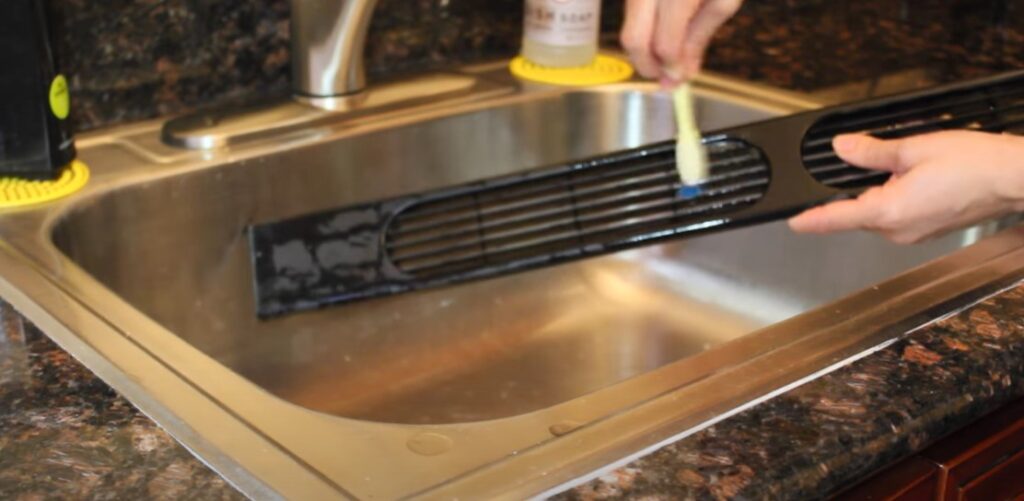
How Do You Fix a Warm Fridge and Cold Freezer in Whirlpool?
When dealing with a warm fridge and cold freezer issue in a Whirlpool refrigerator, start by checking for blocked air vents and inspecting the condenser coils.
Ensure that the vents are clear of any obstructions, allowing proper airflow. Additionally, clean the condenser coils located either at the back or beneath the refrigerator.
Accumulated dust on these coils can hinder heat dissipation, affecting the cooling efficiency.
How Do You Fix a Warm Fridge and Cold Freezer in Samsung?
To address a warm fridge and cold freezer scenario in a Samsung refrigerator, begin by examining the air vents for any blockages. Proper ventilation is crucial for maintaining the desired temperatures in both compartments.
Clean the vents using a soft brush or vacuum cleaner. Additionally, check the temperature settings to ensure they are appropriate for both the fridge and freezer.
If the issue persists, consider inspecting the door seals for any gaps or wear, as compromised seals can lead to temperature imbalances.
Side-by-Side Refrigerator Not Cooling but Freezer is Fine
If you find that your side-by-side refrigerator is not cooling adequately on the refrigerator side while the freezer remains fine, several factors may be at play.
First, examine the vents between the two compartments and ensure they are unblocked. Often, a blockage can disrupt the airflow, affecting the refrigerator’s cooling.
Additionally, check the thermostat settings to confirm they are appropriate for both sections. If the issue persists, inspect the condenser coils for dust and debris accumulation, as a dirty condenser can impede overall cooling efficiency.
In some cases, a malfunctioning damper control or a faulty evaporator fan may be the culprit, and professional assistance may be required for a thorough diagnosis and repair.
Fridge is Warm but Freezer is Cold? DIY Repair
Conclusion
Fixing a warm fridge and cold freezer requires some troubleshooting and maintenance practices. Ensure that the refrigerator is plugged correctly, the thermostat is in the right setting, and the vents and coils are clean. Avoid overloading the refrigerator and ensure that the door seals tightly.
If the problem persists, you may need to replace the temperature sensor, defrost timer, or compressor. It is essential to note that a malfunctioning refrigerator not only leads to food spoilage and waste but also increases your energy bills.
Regular maintenance and timely repairs will help keep your fridge running efficiently, ensuring maximum lifespan and performance.
By following these simple guidelines, you can fix a warm fridge and cold freezer and enjoy the benefits of having fresh, cold food at all times.
